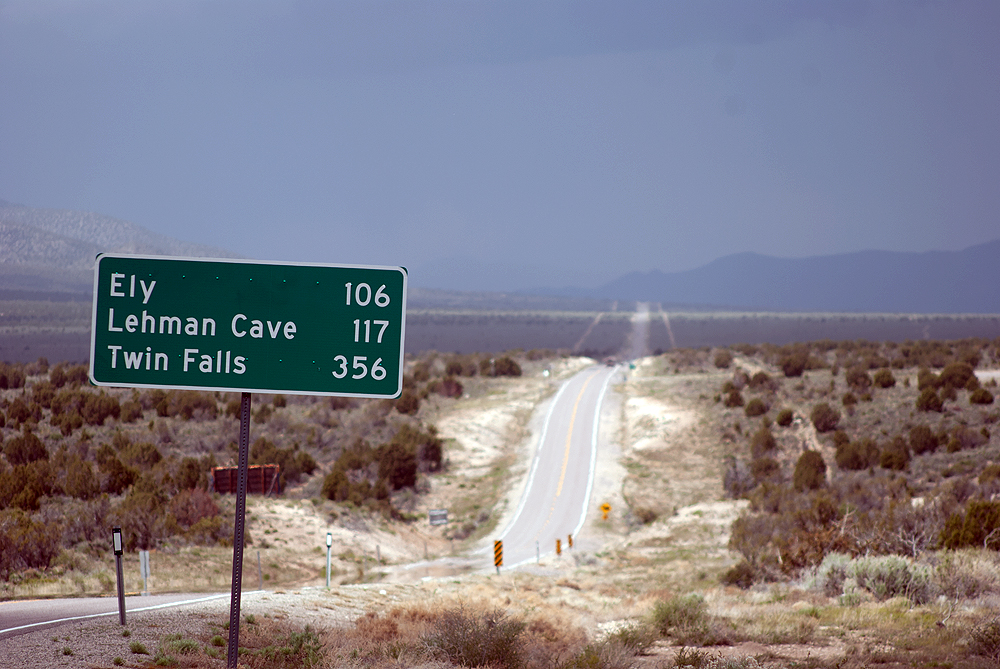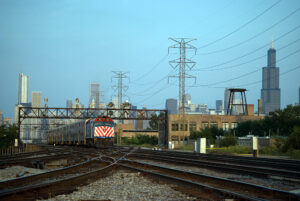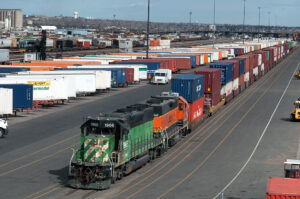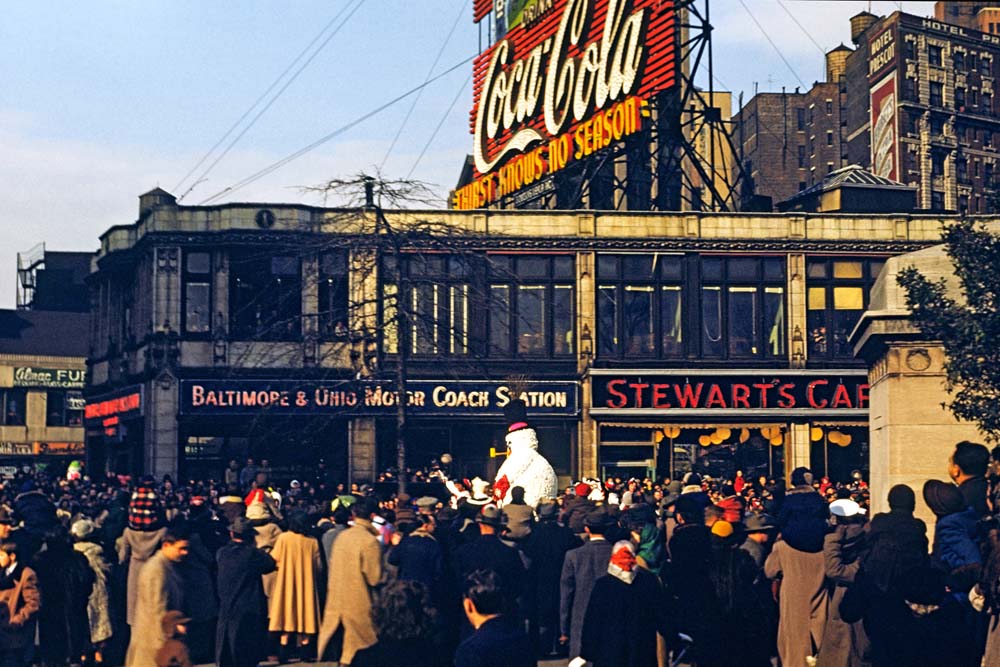Railfan and train-watching safety is key to any successful train-watching trip, whether it be a block away from home or a continent away. One must have situational awareness.

Taking the time to know your surroundings, what looks right, what doesn’t look right is essential to ensure you have a great trackside experience. Historically speaking, rail lines, yards and facilities have not always been in the best locations for safety. Always when railfanning, it’s good to know where you are in case of emergency with yourself, someone near you, or if a train has an incident. A street address, a nearby business, or in rural areas, a GPS location can ensure any assistance can quickly find you when minutes count.
Trackside safety

When you are trackside, you should always be watching the train as it passes to ensure it is safely moving and not causing a threat with anything that may be dragging or loose on a railcar.
A dragging chain or band from a railcar at speed can be deadly if it strikes someone standing by the tracks. Select your safe viewing location as if something is dragging from a passing railcar. By giving the train plenty of space to pass, you will be sure to have a great outing
Also, if you are too close to the train and a derailment occurs, your reaction time may not be fast enough to remove you from danger. As a rule, always have an escape route planned that is 90 degrees to the path of the train. This will put as much distance as possible between you and the train, if needed.
Be cordial but wary of unknown people
While trackside I routinely run into a lot of people, from farmers in rural areas to homeless in urban settings. Most of the time, they will give you no notice, while for others, your mere presence will cause them to investigate further. Have an escape route planned in case a less than favorable situation presents itself.
Whether on foot or in your vehicle, know what behavior looks right and what does not. Do not hesitate to relocate if you get the sense that something may be unsettling.
Know your location
Depending on where you choose to railfan, railroad property may not always be marked. If you are unfamiliar with the area, you can always stay on the side of public property, such as roadways or crossings, to limit the interaction you may have with property owners or law enforcement. Remember that in many places, people use routes through and around train tracks as shortcuts, so a property owner may not realize that you are a photographer.
Railroads routinely cross-reference street addresses for emergencies. The best thing to know is your milepost on the railroad or a grade crossing/street location. At all grade crossings, there is a blue Emergency Notification System sign. This sign has an emergency phone number and reference number for that crossing. This unique geographical identification number will direct help to your specific location.
Local emergency services will NOT know about railroad mileposts or crossing ENS identification numbers. Be prepared if you are calling the local authorities, to relay a street address as that is their primary way of locating, alerting, and responding to emergencies.
Extremes
Extreme heat and cold can be a big issue for those not prepared and venture out trackside. Remember to bring plenty of sunscreen and water for hot weather and plenty of cold-weather gear for winter trips. During the winter, put extra warming items in your car in case you need them – blankets and sleeping bags can make an hours-long wait for a tow truck or a ride home from a broken-down car a bit more bearable when its 10 degrees below zero. Also, don’t place yourself in a location where your escape route could be cut off by water or debris after a storm. In the Mojave Desert, for example, distant thunderstorms can cause dry washes to become raging torrents spurring flash flooding with no warning. If you are train-watching up a dry wash during monsoon season, there is a chance it could be wet at any time if storms are upland of the stream.
Animals — big and small
If you prefer to railfan in remote areas, you need to have your head on a swivel. In some places, railfans are lower on the food chain. A rail photographer recently shared an experience of running into a wolf on BNSF Railway’s Stevens Pass in Washington. The wolf stood its ground for some time after being alerted to his presence. Bears and mountain lions can also prove to be something you should watch out for, especially in remote areas where you may enter their territory.
Smaller animals are usually a passing glance. In more arid regions, however, you will have to contend with poisonous reptiles and insects that will sting or bite your hands or feet. Be sure to look first before grabbing or stepping to ensure the area is clear. Insects can be trouble to the point that the only refuge is in your car with the windows rolled up! From mosquitoes to hornets, they can surely ruin a good outing if you aren’t prepared.
Is your vehicle railfan ready?
For a successful trip, make sure you have plenty of fuel and your vehicle is in good working order. Areas around railroads are also known to be less than friendly on tires, so ensure the rubber your vehicle drives on will be somewhat resistant to the sharp rocks, debris, and spikes you may encounter.
Always carry jumper cables with you for those long days trackside where you forget your scanner is running constantly in your vehicle. Your car’s battery will not forget, and its power will become low or gone.
Be ready to talk to law enforcement

In most cases, law enforcement is doing their job and do not intend to hassle you if you have a camera and tripod trackside. Some contact with local police, sheriff, or a railroad special agent will be a result of a called-in report or the curiosity of a passing officer. Be cordial, professional, and prepared to tell them what you are doing. I have found that having a copy of Trains with me is usually enough to make the contact fast, allowing you to quickly get back to taking train photos. The officers have a job to do and the faster they realize you are not a threat, the faster they will usually leave you alone.
Basic safety rules are pretty much common sense, but what works in your home area may not work if you train watching in other places. Some locations may be wary of people trackside. If you are new to an area, follow proper safety procedures and place yourself in a safe location to watch trains. This should limit interactions with others and make the trip successful.
Robert W. Scott is Operations Chief for the West Thurston Region Fire Authority in Olympia, Washington. Scott is also a noted rail photographer and Trains contributor.














One of THEE BEST articles in Trains in recent memory.
One more “addition” especially if you are somewhere that has animals that think you look mighty tasty-a firearm. Check local laws and ordinances, check with the county sheriff or state patrol and make sure you actually know how to use the thing. I realize I just put the libbie foamers shorts in a twist; what would you rather be: alive and talking to the state patrol or game warden about what happened or a news snippet about being “an unfortunate incident”? I live in northern Idaho, we carry to go to the gas station. If my comments do upset you, grow up and get over it.
Here here!
I also do presentations and work booths for Operation Life Saver. I also worked for Amtrak for 17 years. I never enter railroad property unless I have permission of the owning railroad. I always follow what I say in my presentations. ” Always expect a train at any time in any direction on any track”.
When taking photos use only public right of way—don’t be stupid! Expect a train of movement on any track at any time. I was a in house instructor for new clerical employees in the 1970-80. We stressed safety.
Ed Burns